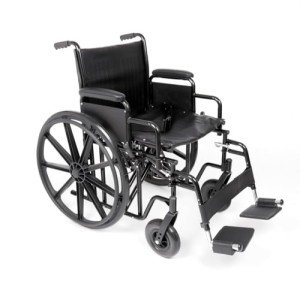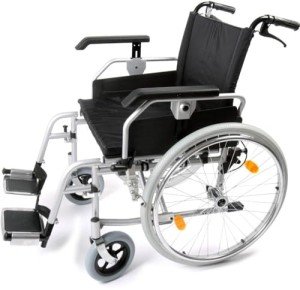의류 분류
The 9 Things Your Parents Taught You About Bariatric Living Aids
작성자 정보
- Chas Kier 작성
- 작성일
본문
 bariatric living aids (learn more about www.metooo.es)
bariatric living aids (learn more about www.metooo.es)Bariatric (overweight) patients need strong mobility aids to assist them maintain self-reliance. Utilizing small equipment increases personnel pressure and threats injuries to both the patient and caregiver.
 Ensure that equipment is effectively sized by performing home assessments. Expand corridors, doors, and ramps if required for bariatric equipment to safely access homes.
Ensure that equipment is effectively sized by performing home assessments. Expand corridors, doors, and ramps if required for bariatric equipment to safely access homes.Walking Aids
Walking aids are bariatric wheelchair uk mobility equipment suggested by a medical professional or physiotherapist to preserve your independence and assist you recuperate from injuries, Bariatric Living Aids surgical treatment or discomfort. They are likewise utilized long term for people with muscle weakness or balance problems. They are readily available in a variety of types to meet your requirements consisting of, walking sticks, rollators and walkers for greater stability.
Physio therapists are the most certified to evaluate your requirements and recommend the best walking help for you. This evaluation includes an evaluation of your functional status, day to day mobility requirements (e.g. browsing limits, public transport) and your danger factors for falls such as cardiovascular, musculoskeletal and neurological.
A good physio therapist will be able to supply the right bariatric walking help for you, that includes a suitable prescription based on your height, weight and health care strategy along with an extensive rehab programme. This will optimise your recovery and lower the risk of future injury.
heavy duty bariatric wheelchair medical equipment such as bariatric walking sticks, commodes, shower chairs and wheelchairs are designed to accommodate larger clients who require mobility support. Frequently basic medical items can not support the included weight and so must be modified with additional bracing to ensure that they are safe to utilize. This modification is a vital action to help individuals with obesity feel more positive about living independently in their own homes, and it can also make their experience at healthcare facility and other medical centers more workable by decreasing the possibility of them being turned down for admission or treatment due to a lack of adequate mobility equipment.
Crutches
Crutches are an effective bariatric living aid for people who need assistance while walking. They take weight off of one leg and enable the user to press through their hands rather than their knees or feet, helping them to move quicker and more efficiently than they would have the ability to do otherwise. They also assist to avoid pressure on the injured knee or foot, which can cause further discomfort and discomfort.
When utilizing crutches, it is essential to place them properly so that the hand grips are 1 to 2 inches listed below the elbow when in an unwinded underarm position. Likewise, the axillary pad must rest against the patient's chest straight above their elbow, rather than extending down past their underarm. This will allow the user to keep their hands free for balance and control.
Clients should always mosey and carefully while using crutches to avoid falls. They should avoid steep or icy slopes and keep the crutches clear of obstructions such as poles and stair railings. They must also make sure that they are not leaning on the suggestions of their crutches, which can cause them to fall over or divert off in a direction unexpectedly. It is recommended that clients use crutches in sets so that they can assist to consistent one another if needed.
To rise stairs, the client should stand near the top of the action and hold the hand rails for assistance. They must then bring their crutches to the next action listed below them and put their foot on it before moving forward. They should then duplicate the process of moving down each action. Additionally, the patient may be able to rise and come down stairs by leaning on the chair arm of a steady chair.
Many medical professionals prescribe crutches to their patients after an injury or surgical treatment. However, if you are not comfy with them or feel that they do not provide sufficient stability or support, consult your physician to talk about options. For example, you may have the ability to attempt a cane instead of crutches or a wheelchair if your medical professional feels that it will be better suited for your circumstance.
Commodes
Commodes are a terrific bariatric living help that supplies clients with toileting independence. Carers can help their patients move to the commode, and then leave the room, offering personal privacy and decreasing tension and anxiety for clients who fight with going to the bathroom by themselves.
Basically, a commode is a chair with a cutout in the seat that serves as a toilet. Many have a pot attached under the cutout that acts as a collection container for waste. The commode can be used as a standalone toilet or over an existing one, and many have removable legs to allow it to fold flat for storage. There are a number of types of bedside commodes offered, and some may be covered by insurance, so it's essential to talk to your doctor and insurance company.
Shower Chairs
For people who are not able to represent long periods, entering into and out of the bathtub can be tough. Falling while trying to bathe can lead to major injuries and pain. Shower chairs, likewise called bath chairs, are a bariatric wheelchair weight limit living aid that can assist prevent falls and make bathing much safer.
There are a broad variety of shower chairs to fit the requirements of various people. For instance, a standard shower chair with or without back can support as much as 300 pounds while swivel models allow users to being in the tub and orient themselves in a position to reach the shower knobs, soap, and so on. Some shower chairs can likewise be rolled over the toilet to function as a commode seat and are available with or without arms.
When selecting a shower chair, it is necessary to take measurements of the space and tub to guarantee that the chair will have the ability to fit correctly. Furthermore, some individuals find it handy to put non-slip shower mats both inside and outside of the shower to help keep the chair from sliding, particularly if water gets on the flooring.
Lots of individuals who use shower chairs find that they can be more comfy while sitting in them than on a bath stool, which can be more uneasy for long periods of time and might not have an adjustable height setting. Nevertheless, a shower stool can still work for individuals who have the ability to get in and out of the tub with relative ease and are simply trying to find some extra stability while bathing.
People who want to acquire a shower chair will require to have a physician compose a prescription for it and potentially work with their Medicare Advantage strategy or private insurer to see if they can get coverage for the item. In many cases, a person who has considerable mobility issues might be able to have the shower chair covered by Medicaid. If that's the case, the person ought to talk with their state Medicaid agency to determine what the guidelines and guidelines are for that location.
관련자료
-
이전
-
다음작성일 2025.02.01 23:46
댓글 0
등록된 댓글이 없습니다.
